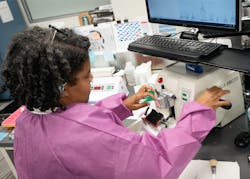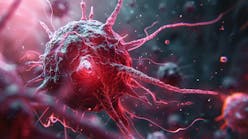Artificial intelligence supports fast, accurate cancer detection
Digital pathology has both sped up and increased the accuracy of cancer diagnosis over the past 10 years, and now artificial intelligence (AI) could improve these tools even more.
Though we are nowhere near “unsupervised” AI use in diagnosing cancer, Anil Parwani, MD, PhD, director of the Division of Anatomical Pathology at The Ohio State University Comprehensive Cancer Center – Arthur G. James Cancer Hospital and Richard J. Solove Research Institute (OSUCCC – James), says these tools are becoming a powerful decision-support resource to confirm cancer diagnoses made by trained pathologists. Long-term, they could address a global shortage of pathologists and fill gaps in care.
Parwani says these AI “machine-learning” processes are especially impactful for determining how high or low risk a cancer is, a concept known as “grading” used to determine how likely a cancer is to spread and how quickly.
Parwani says AI technology also has the potential to pre-screen patients before the pathologist reviews the slides to make a diagnosis so the team can prioritize possible high-risk cancers to speed up confirmation and start treatment sooner.
Pathologists are trained to look at specific features of the cell that are seen through a microscope. Digital pathology took these cellular images – which are traditionally viewed on a series of single flat images on glass slides – and combined them into a single 3D image that can be studied from all angles on a computer. AI can find concerning features outside the cancer cell that are not obvious to the human eye. Parwani explains, these serve as signals to create a risk ranking (low to high) and give important information for guiding treatment decisions.
“So today, we can use AI tools to help us predict these features in patient samples. AI does not make a diagnosis – but once I, as a pathologist, make a diagnosis, I can then use AI to find additional clues that will help the treating oncologist suggest a treatment plan for the patient,” he said. “This is especially helpful in rare cancers or cancers with a specific genetic mutation that might benefit from a very specific therapy.”
The OSUCCC- James is currently testing the use of AI in prostate, breast, gastric and other cancers for diagnosis validation and risk assessment.





